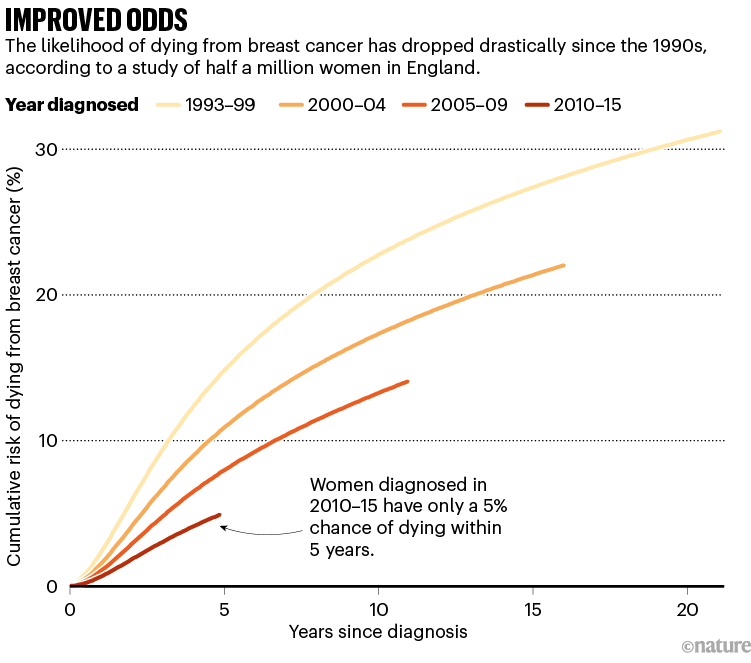Huge leap in breast-cancer survival rate
Huge leap in breast-cancer survival rate
Women diagnosed since 2010 have a much lower risk of dying than those diagnosed in the 1990s.

Mammograms can be used to diagnose breast cancer.Credit: Michael Hanschke/DPA Picture Alliance/Avalon
The number of people who die after a breast-cancer diagnosis has decreased by two-thirds since the 1990s, a study of more than half a million women in England has shown.
The research has taken ten years to complete, says Carolyn Taylor, lead author and oncologist at the University of Oxford, UK. The analysis includes the 512,447 women in England who were diagnosed with early invasive breast cancer between January 1993 and December 2015; the researchers tracked the women until December 2020 using data from the National Cancer Registration and Analysis Service.
Women who were diagnosed in 1993–99 had a 14.4% risk of dying within 5 years. This fell to 4.9% for women diagnosed in 2010–15 (see ‘Improved odds’). The results were published1 on 13 June in The BMJ.
“We knew that mortality had reduced during the past 20 years, but we didn’t know by how much,” says Taylor. “That’s a two-thirds reduction.”

Source: Ref. 1
Long-term outcomes
The study showed that the risk of death decreased across almost all age groups, and for both women whose cancer was diagnosed through screening, and those who had not been screened.
The reasons for the drop aren’t clear, however. Since the 1990s, awareness of breast cancer has risen and, in England, routine screening is offered to more women. Randomized trials have explored how specific treatments affect survival after diagnosis. “What we can’t do is say how much of the improvement is due to treatment or screening or breast cancer awareness,” Taylor says.
The decline in mortality rate wasn’t a surprise, says Naser Turabi, director of evidence and implementation at Cancer Research UK (CRUK) in London. CRUK funded the research, but Turabi was not involved in the study. “Research is incredibly important to determine the success of treatments,” he says, and this study will help patients to make better-informed decisions about their treatment.
Patient involvement was important to the study, Taylor says. The scientists appointed two patient representatives to guide their research. “They helped us in the questions to be addressed. They looked at the analyses and gave comments and suggestions throughout the study. And they helped us to interpret the results in the way that patients can understand.”
Large-scale studies such as this one that track outcomes over many years are important for setting research and funding priorities, says Turabi. “Fundamentally, if we can’t track the success of the interventions we put in place, the case for those interventions is weakened.”

Comments
Post a Comment
Please comment on this blog-